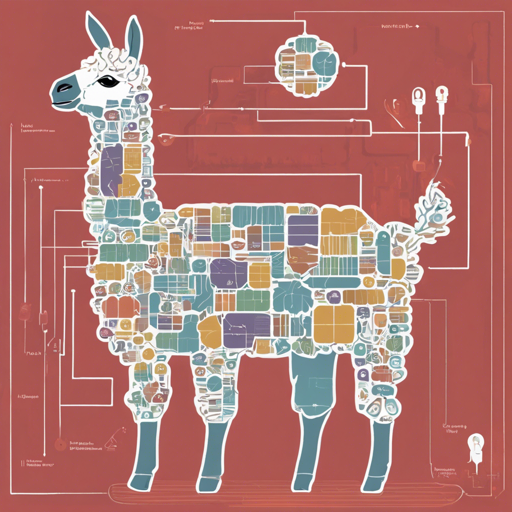The Llama3-8B-ITCL-Bitnet1.6B is a transformative language model designed to enhance memory efficiency and inference speed, making it exceptionally useful for natural language processing (NLP) tasks. In this article, we’ll guide you step-by-step on how to implement this model in your projects.
Understanding the Structure of Llama3-8B-ITCL-Bitnet1.6B
Imagine a library where each book represents a parameter of the model. Traditional libraries have a full-size collection of every book — quite large, making it cumbersome to move around. Now, envision a more efficient system, where each book is reduced in size and the total number of books needing to be scanned is significantly minimized. This is similar to how the Llama3-8B-ITCL-Bitnet1.6B operates with its Bitlinear layers that process data more efficiently by using values of 1, 0, and -1.
Getting Started
In order to make full use of the Llama3 model for your NLP tasks, follow these steps:
Requirements
- Python: Ensure you have Python installed on your machine.
- Dependencies: Install the required libraries by running the following command in your terminal:
pip install transformers torch huggingface_hub wandb coloredlogsLoading the Model
Loading the model is as simple as running a Python script. Use the code snippet below to load the Llama3 model successfully:
from transformers import AutoModelForCausalLM, AutoTokenizer
import torch
import coloredlogs
import logging
coloredlogs.install(level='INFO', fmt='%(asctime)s - %(levelname)s - %(message)s', logger=logging.getLogger())
logger = logging.getLogger(__name__)
HF_TOKEN = 'your_api_key_here'
model = 'ejbejaranos/Llama3-8B-ITCL-Bitnet1.6B'
# Load a pretrained BitNet model
tokenizer = AutoTokenizer.from_pretrained(model)
model = AutoModelForCausalLM.from_pretrained(model, token=HF_TOKEN)
model.config.pad_token_id = tokenizer.eos_token_idPerforming Inference
Once the model has been loaded, you can use it to generate text based on a given prompt:
prompt = "What is the color of the sky?"
inputs = tokenizer(prompt, return_tensors='pt', padding=True, truncation=True).to(model.device)
# Generate text
generate_ids = model.generate(inputs.input_ids)
decoded_output = tokenizer.batch_decode(generate_ids, skip_special_tokens=True)
print(decoded_output[0]) # Print the generated responseTroubleshooting
While using the Llama3-8B-ITCL-Bitnet1.6B model, you might encounter some issues. Here are common troubleshooting tips:
- API Key Issues: Ensure that your Hugging Face token is set correctly in
HF_TOKEN. - Dependency Errors: Check that all dependencies are correctly installed. If you encounter import errors, try reinstalling the missing libraries.
- GPU Compatibility: If you’re using a GPU, ensure that your environment is set up to use CUDA. If you run into CUDA errors, verify your CUDA installation and compatibility with your PyTorch version.
For more insights, updates, or to collaborate on AI development projects, stay connected with fxis.ai.
Conclusion
By leveraging the Llama3-8B-ITCL-Bitnet1.6B model, developers can tap into the power of resource-efficient NLP tasks. Always stay current with the latest developments in AI and natural language processing to maximize the effectiveness of your solutions.
At fxis.ai, we believe that such advancements are crucial for the future of AI, as they enable more comprehensive and effective solutions. Our team is continually exploring new methodologies to push the envelope in artificial intelligence, ensuring that our clients benefit from the latest technological innovations.

